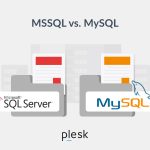Table of Contents

What is Imunify360 ?
Imunify360 works within a hosting environment by providing an all-in-one security solution that protects the server, websites, and users from a wide range of online threats. When integrated into hosting control panels like cPanel, Plesk, or DirectAdmin, Imunify 360 offers robust, automated protection for shared, VPS, and dedicated hosting environments. Imunify 360 works on websites by providing multiple layers of security that monitor, detect, and mitigate various types of threats. It operates both proactively and reactively to secure your website from malware, hacking attempts, and other vulnerabilities.
Imunify360 functions :
Here’s how Imunify360 functions to protect websites:
1. Malware Scanning and Removal
- How it works: Imunify 360 continuously scans all files and directories on your website for malware, viruses, or any suspicious code. It uses advanced algorithms and heuristics to identify known and emerging malware strains.
- Action: Once detected, it automatically quarantines or removes the malicious files. It also provides alerts to the website owner/admin and allows manual review.
2. Web Application Firewall (WAF)
- How it works: The Web Application Firewall (WAF) actively filters and monitors HTTP/HTTPS traffic to the website. It checks incoming traffic for malicious patterns such as SQL injection, cross-site scripting (XSS), and other types of attacks that exploit vulnerabilities in web applications.
- Action: If it detects malicious traffic, Imunify 360 blocks or limits access to the site for that user, preventing them from executing an attack.
3. Proactive Defense (Real-Time Monitoring)
- How it works: Imunify360 continuously monitors the behavior of scripts running on the website. If it detects unusual or suspicious activity, such as code execution that resembles a malware attack, it immediately blocks the script before it can cause damage.
- Action: This feature stops attacks in real time, even if the malware or vulnerability is unknown, and alerts the website owner or administrator.
4. Intrusion Detection and Prevention (IDS/IPS)
- How it works: Imunify360 maintains a database of known attack patterns and signatures. It monitors server logs and incoming traffic for signs of an attack, such as brute force login attempts, network reconnaissance, or abnormal behavior.
- Action: When an attack is identified, it either blocks the traffic or sends a warning to the admin, reducing the risk of successful intrusion.
5. Reputation Monitoring
- How it works: Imunify360 checks if your website or IP address appears on spam or malware blacklists. It continuously monitors global reputation databases for any signs that your website has been flagged as malicious.
- Action: If your site is blacklisted, Imunify360 alerts you immediately and provides guidance on how to remove the listing.
6. Patch Management
- How it works: Imunify360 automatically applies security patches to the web server and website software. This includes updating known vulnerabilities in popular content management systems (CMS) like WordPress, Joomla, and others.
- Action: By keeping the website’s software up-to-date, Imunify360 reduces the risk of attacks exploiting outdated code.
7. Brute Force Protection
- How it works: Imunify360 detects and blocks brute force attacks, which are attempts to gain unauthorized access to your website by guessing login credentials repeatedly.
- Action: It limits login attempts and blocks IP addresses after repeated failed login attempts to prevent hackers from gaining access to sensitive areas like the admin panel.
8. CAPTCHA Protection
- How it works: For suspicious visitors, Imunify360 can show CAPTCHAs before allowing access to certain parts of your website, like login pages. This ensures that automated bots cannot easily attack the site.
- Action: Only real users who can solve the CAPTCHA can proceed, reducing bot-related attacks like DDoS.
9. Automatic IP Blocking and Whitelisting
- How it works: Imunify360 uses a global threat intelligence database to automatically block known malicious IP addresses. It also allows website administrators to whitelist safe IPs.
- Action: Malicious IPs are automatically denied access to the site, while legitimate traffic continues without interruption.
10. Self-Healing and Incident Response
- How it works: If an issue is detected, such as malicious code injection or system compromise, Imunify360 can automatically take steps to fix it by restoring clean files or blocking affected areas.
- Action: This “self-healing” capability helps restore websites quickly after an attack, minimizing downtime.
11. Detailed Reporting and Alerts
- How it works: Imunify360 generates reports on the security status of your website, including blocked attacks, malware scans, and more. It provides real-time alerts on critical security events.
- Action: Admins and website owners can access dashboards to see security metrics and take appropriate action if necessary.
Summary of How It Works:
- Detection: Scans for threats in real time (malware, vulnerabilities, attacks).
- Prevention: Stops malicious traffic using firewalls, intrusion prevention, and CAPTCHA.
- Mitigation: Automatically removes threats or quarantines infected files.
- Protection: Applies security patches and monitors reputation.
- Reporting: Provides alerts and actionable reports to website owners.
By incorporating these layers of protection, Imunify360 provides robust, automated security, ensuring that your website remains safe and available to legitimate users while blocking malicious actors.
Benefits and Drawbacks of Imunify360
Here’s an overview of the benefits and drawbacks of using Imunify360 in a hosting environment:
Benefits of Imunify360
1.Comprehensive Security
- Imunify360 offers multiple layers of protection, including malware scanning, firewalls, and intrusion detection, providing a robust defense against a wide range of threats.
2.Real-Time Protection
- The solution operates continuously, monitoring and defending against threats in real time, which helps prevent breaches before they can cause damage.
3.Automated Malware Removal
- With its automatic malware scanning and removal features, Imunify360 can quickly eliminate threats without requiring manual intervention, saving time and resources for administrators.
4.User-Friendly Interface
- The centralized management dashboard is easy to navigate, allowing hosting providers and administrators to manage security settings, view reports, and respond to incidents efficiently.
5.Patch Management
- Imunify360 automatically applies security patches to server software and web applications, minimizing the risk of exploitation from known vulnerabilities.
5.Brute Force Protection
- It helps protect against brute force attacks by limiting login attempts and blocking suspicious IP addresses, enhancing the security of sensitive areas like admin panels.
6.Proactive Defense Mechanisms
- The system can detect and block zero-day attacks and other unknown threats by analyzing the behavior of scripts and applications, enhancing overall security.
7.Reputation Management
- It monitors the reputation of the server’s IP addresses and domains, alerting administrators to any blacklisting issues, which can help maintain the server’s credibility.
8.Self-Healing Capabilities
- Imunify360 can automatically restore clean files and services after a malware infection, minimizing downtime and restoring normal operations swiftly.
9.Cost-Effective Solution
- By automating many security tasks, Imunify360 can reduce the need for extensive manual monitoring, making it a cost-effective choice for hosting providers.
Drawbacks of Imunify360
1.Resource Consumption
- Continuous scanning and monitoring can consume server resources, potentially affecting the performance of hosted websites, especially on shared hosting environments.
2.False Positives
- The malware detection system may sometimes flag legitimate files or scripts as threats (false positives), leading to unnecessary quarantining or removal of files.
3.Dependency on Automation
- Relying heavily on automated processes may lead to complacency among administrators, who might overlook manual checks or updates that are also important for security.
4.Complex Configuration
- For some hosting providers, configuring Imunify360 to fit their specific security needs may require a steep learning curve or additional expertise.
5.Cost Considerations
- While it can be cost-effective in the long run, the initial licensing and implementation costs of Imunify360 may be a concern for smaller hosting providers or businesses.
6.Limited Customization
- Some users may find the options for customizing security settings and rules to be somewhat limited compared to other dedicated security solutions.
7.Reliance on Updates
- The effectiveness of Imunify360 relies on its continuous updates to maintain its malware definitions and threat detection capabilities. If updates are not timely, it may become less effective against new threats.
8.Integration Issues
- While Imunify360 is designed to integrate with popular hosting control panels, there might be compatibility issues with less common software or custom hosting environments.
Conclusion
Overall, Imunify360 is a powerful and effective security solution for web hosting environments, offering a range of features to protect servers and websites. However, potential users should weigh its benefits against the drawbacks, considering their specific hosting needs, resource capabilities, and budget before implementation.

